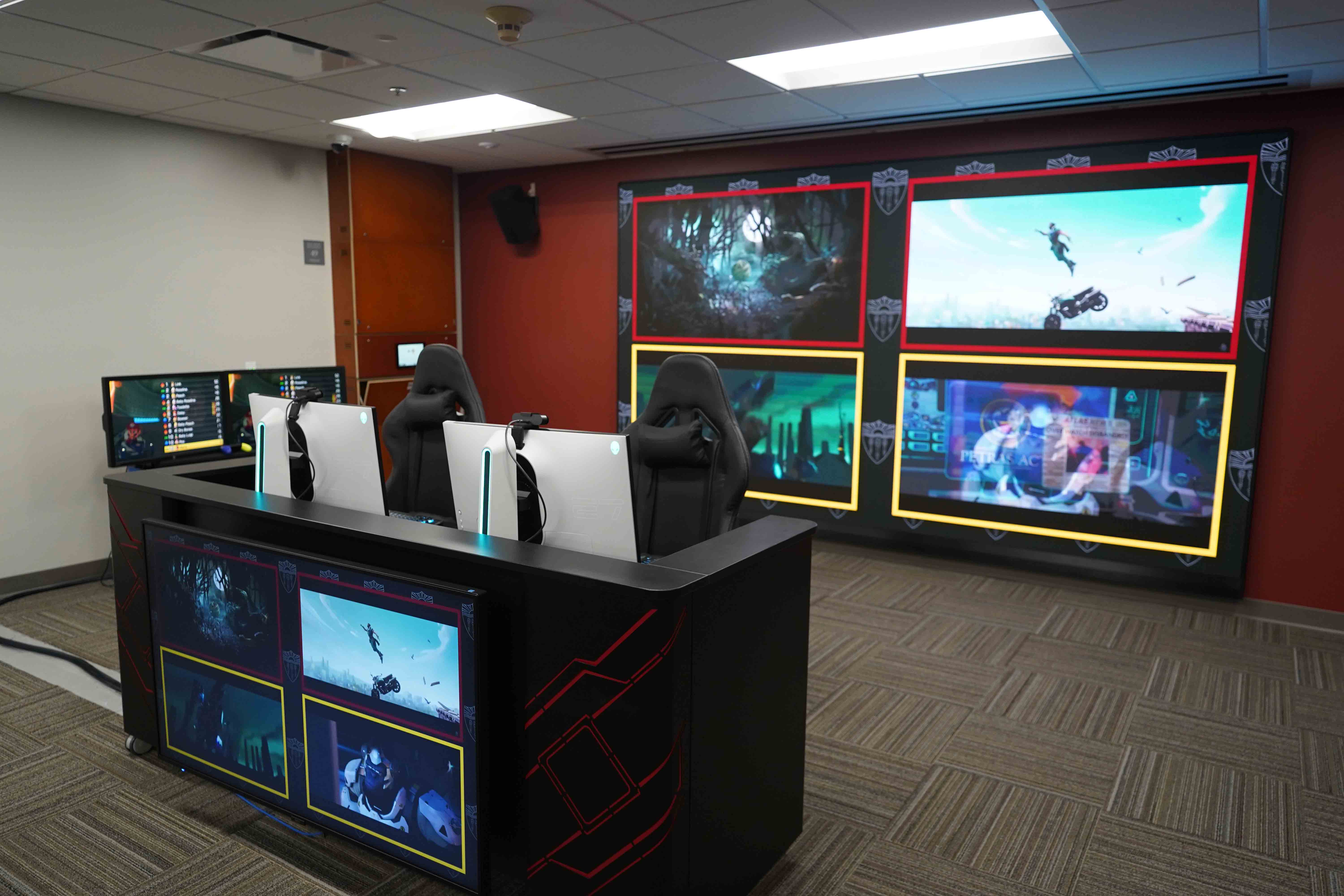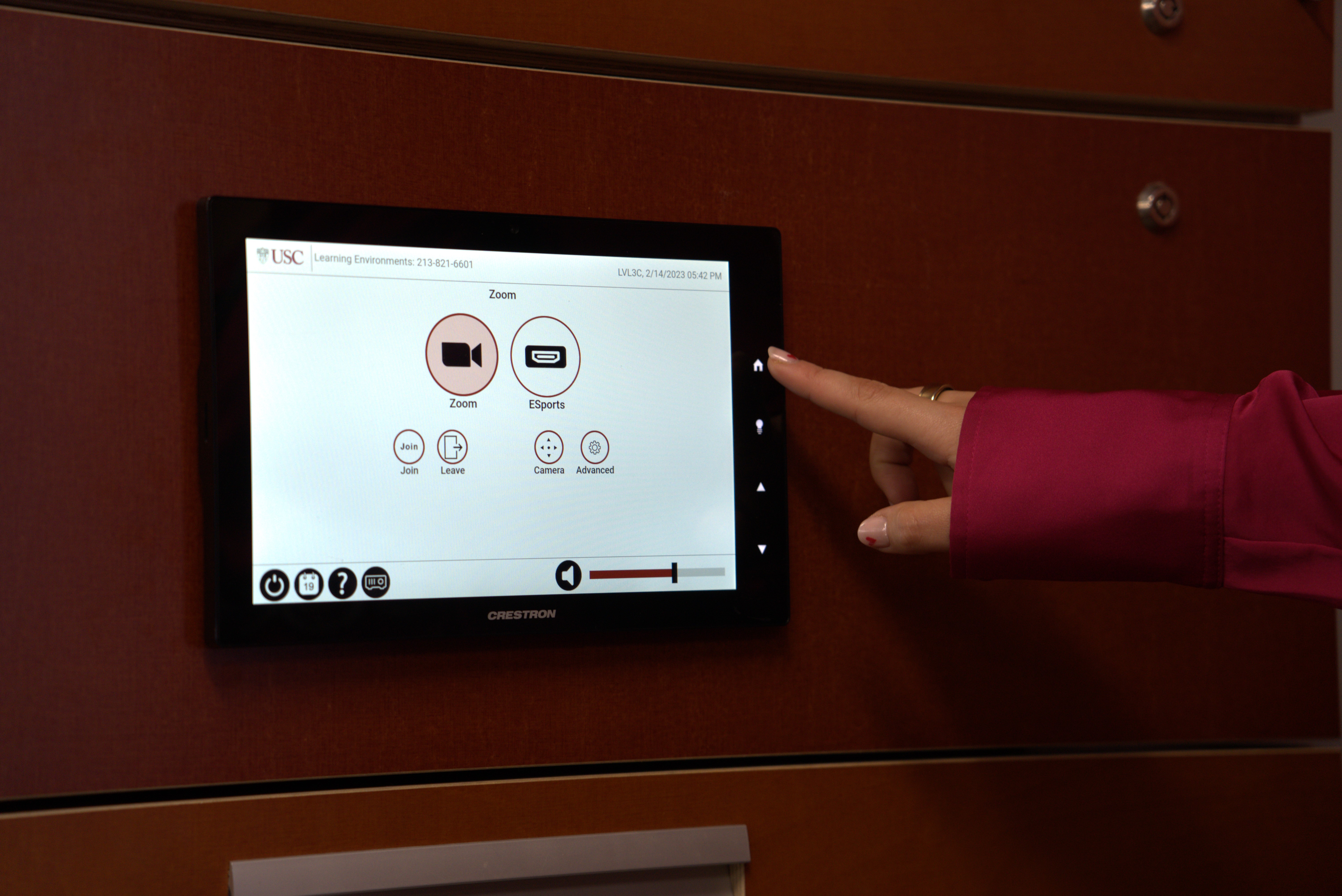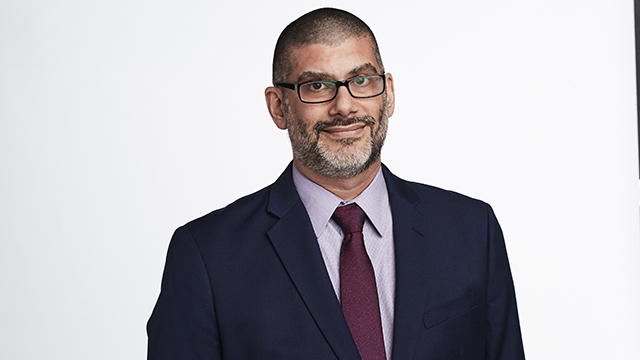Reading, Writing, Replays
Housed in the basement of the Leavey Library, USC’s new Digital Creative Lab offers something for everyone on campus.

Filled with the latest technology, the University of Southern California’s Digital Creative Lab is an esports venue to behold. The Trojans esports team now has a place to call home—but they aren’t the only ones. The innovative facility is home to content creators as well as learning spaces and practice areas for those that want to hone their skills in everything from podcasting to live production.
And it may just be the start.
A Wider Focus
The doors to the Digital Creative Lab opened in February 2023, but the idea was in motion for some time. Prior to its creation, USC had an esports club team that practiced in an old firehouse garage four blocks off campus. When you pair the interest in gaming with one of the top game design programs in the nation, it was clear there needed to be a central space on campus to build that community and give them an identity.
[The Integration Guide to Esports]
USC's AV director, Joe Way, Ph.D., CTS, and his team went to work on a plan before the pandemic hit, but when the world went hybrid, an esports venue became less of a priority. When they were able to refocus on the project, they found a large enough space in the bottom of the basement of the Leavey Library to make an esports venture work. But there was one catch.

“One of the things that's important for my position is I'm funded through the central provost office, which means anything I do has to serve every student, not just any particular major or discipline,” explained Way. “We recognized even if we put in the gaming, we're still really only servicing gamers or the team. But as we started putting the computers together and what it took to do high-performance gaming, we said, ‘What if we just deck them out a little bit more and we could use them for 3D modeling?’”
[Tech Port Center: Esports Gaming at Its Core]
A daily selection of the top stories for AV integrators, resellers and consultants. Sign up below.
What started as a very targeted idea evolved into a venue enveloping many activities across the entire student body. Way quickly saw how many different disciplines gaming touched. There was video rendering and graphic animation for film students, as well as 3D model renderings for architectural students. Plus, the broadcasting side of esports opened the door for a wide range of studies, from film and television to social media.
As a result, they added a video production room, anchored by Panasonic’s KAIROS live production platform, for teaching YouTube and TikTok production. They added a podcast studio. They installed 3D printing stations. They made sure it was a live streaming classroom. Oh, and if they ever need a hologram, they added a system to do that, too.
“People, especially the younger generation, are now a personal brand,” Way said. “If you're a music student or if you're a film major or broadcast, those are easy. But what if you're a humanities major? How can you build your brand and utilize a space like this? That's where we thought, well, if you're in class, maybe you wanted to create your own YouTube channel, talking about things you're learning and develop that type of content, a conversational thing and interview style. And it was like, ‘Wow, now we've really taken every discipline and we've been able to give them a space to work and share ideas and build projects together.'"
Did We Pack Everything?
The Digital Creative Lab holds roughly 200 people because, ultimately, it was designed to be an event space. There are a lot of nooks and crannies that seat different amounts of people. For example, the esports space is somewhat closed off, but it has 20 workstations plus a broadcast control room that seats six. The podcast studio seats another six, while the live streaming classroom has 30 seats. But it’s the design that brings it all together.
“Because everything is completely interconnected as an AV-over-IP system, all of the screens can end up being turned into overflow,” Way explained. “The big collaboration room can hold probably 80-100 itself. If we have an esports tournament, they can watch because not everyone's going to fit inside, but we can live produce it and overflow it into all the screens out there.”
Reading the list of the Pro AV solutions in the lab almost feels like a who’s who of manufacturers in the industry. As Way said, “We took everything and more because we didn't know what we were getting into. We didn't want to come to find out later that we forgot something, so we just added everything.”
For the gamers, there is a mix of Microsoft Xbox Series S, Sony PlayStation 5, and Nintendo Switch OLED consoles. Dante Domain Manager and a slew of other Audinate solutions back the audio. An ARHT system powers the hologram area, while a BrightSign XT11144 media player feeds the displays. There are also several Canon cameras and lenses and Huddly conference cameras throughout the facility.
The esports production control room is powered by the KAIROS, but there is also the QSC Core 110F audio DSP, Crestron DM NVX encoders and decoders, Epiphan Pearl Mini and Pearl 2 live production systems, and RØDE RØDECaster podcast production studios all in play throughout the facility. For videoconferencing, there are DTEN D7 all-in-one collaboration solutions, as well as Shure MXA710 and MXA910 ceiling array microphones. (You'll also find a Shure MV7 podcast microphone in the podcast studio.)
Way knew refresh rate was important, but there was also a lot to learn. "Esports people, they don't care about resolution, which is surprising. They want high refresh rate," he explained. "They don't want a big screen—they want simple right here in front of you, no distraction. In order to make that happen, we knew that we needed to keep things synced. We needed to be faster and get rid of latency.”

Of course, with so many different hands on everything—from teachers to students to those more comfortable with Pro AV—ease of use was a major factor. "There's kind of two sides of it, to be honest," Way offered. "One of our key philosophies here at USC is that we want this to be a very frictionless experience. The systems have to be simple. They have to work for everybody, and we want people to be able to utilize it independently.
"That said, this is also a high-end broadcast space. We created it where if it's being used as a class, essentially, there's two settings on it," he continued. "There's classroom, which the GUI of it looks exactly like a regular classroom. And you flip the switch, and it turns into a 'go have fun, everything's available, mess with it all, and learn how to use it' experience. All the broadcast options are available. And then you flip it back and it resets, and it's all back to simple."
Remember the Mission
The Digital Creative Lab seems to have no boundaries. Way explained that they made sure to leave room for growth, and that required having cloud options within the AV ecosystem. As a result, the lab can expand to other areas around campus.
“We do a lot of events outside, where maybe we want to overflow it outside to show it," Way said. "Right outside this building is actually the main quad area where they do events for either football days or rallies. So, we thought, if we run [equipment] straight up, we can get it connected outside and could both put in and out of the room."
Though it has only been open for a short time, reviews for the facility have been positive. But with all the flashy technology and innovative spaces for study, it is important to remember how the lab links back to a vision of a space that gives every student the opportunity to succeed.
“A lot of people wouldn't know by looking at it, but our mission statement is that every space we utilize is user-centered in design, but it's also that everything has to be sustainable, accessible, and safe," Way noted. “The [Listen Technologies] assisted listening system hidden throughout, the transcription services throughout everywhere—everything is completely ADA compliant. We want every workstation set to be accessible to people in wheelchairs. Those are really things that I think a lot of people overlook, but they're actually very important when we do our design to be able to have everything to work for every student.”

Wayne Cavadi is the senior content manager of Systems Contractor News. Prior to taking a leap into the Pro AV industry, Wayne was a journalist and content lead for Turner Sports, covering the NCAA, PGA, and Major and Minor League Baseball. His work has been featured in a variety of national publications including Bleacher Report, Lindy's Magazine, MLB.com and The Advocate. When not writing, he hosts the DII Nation Podcast, committed to furthering the stories and careers of NCAA Division II student-athletes. Follow his work on Twitter at @WayneCavadi_2 or the SCN mag Twitter page.
